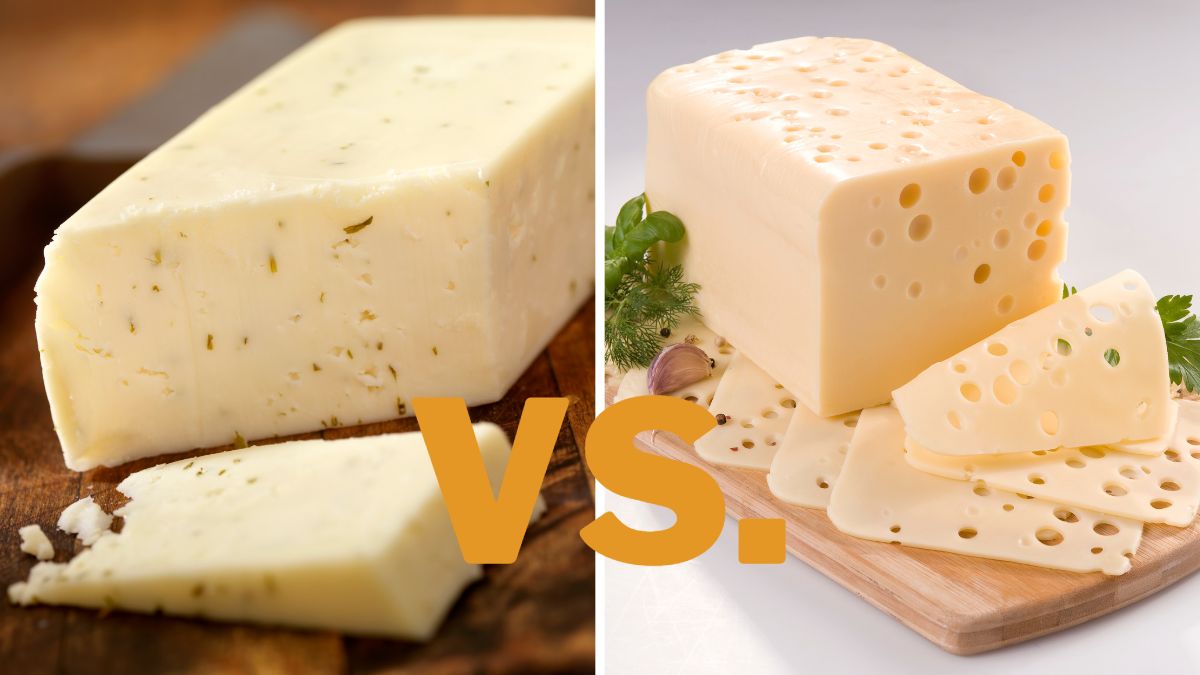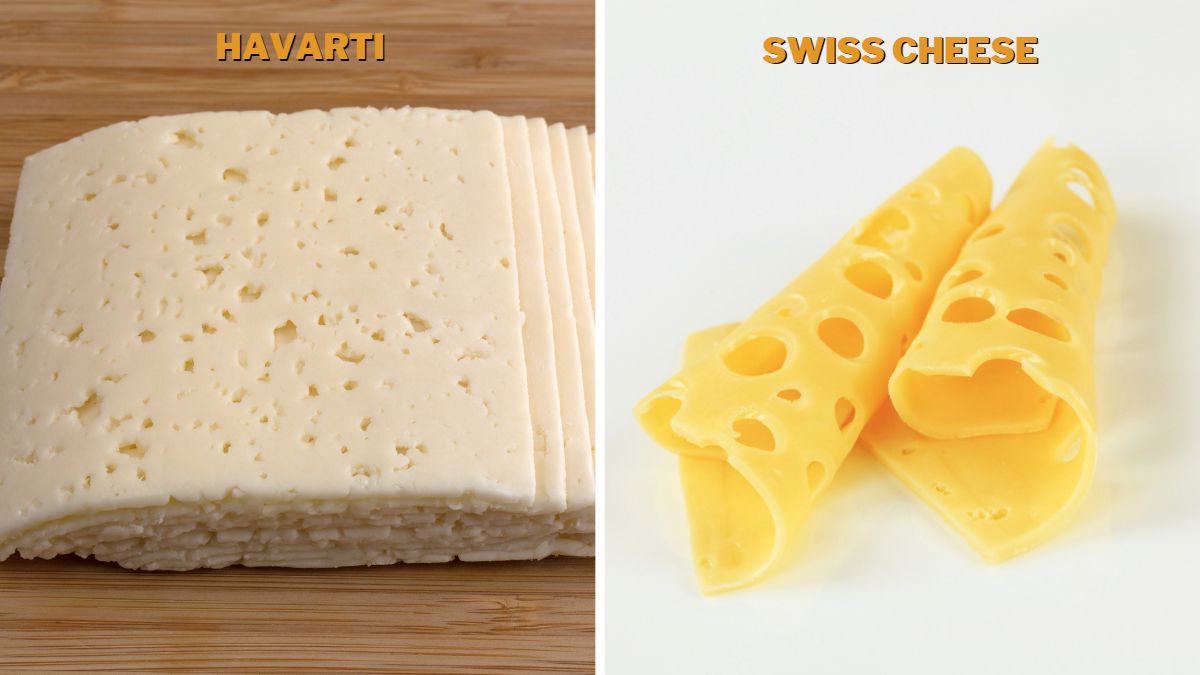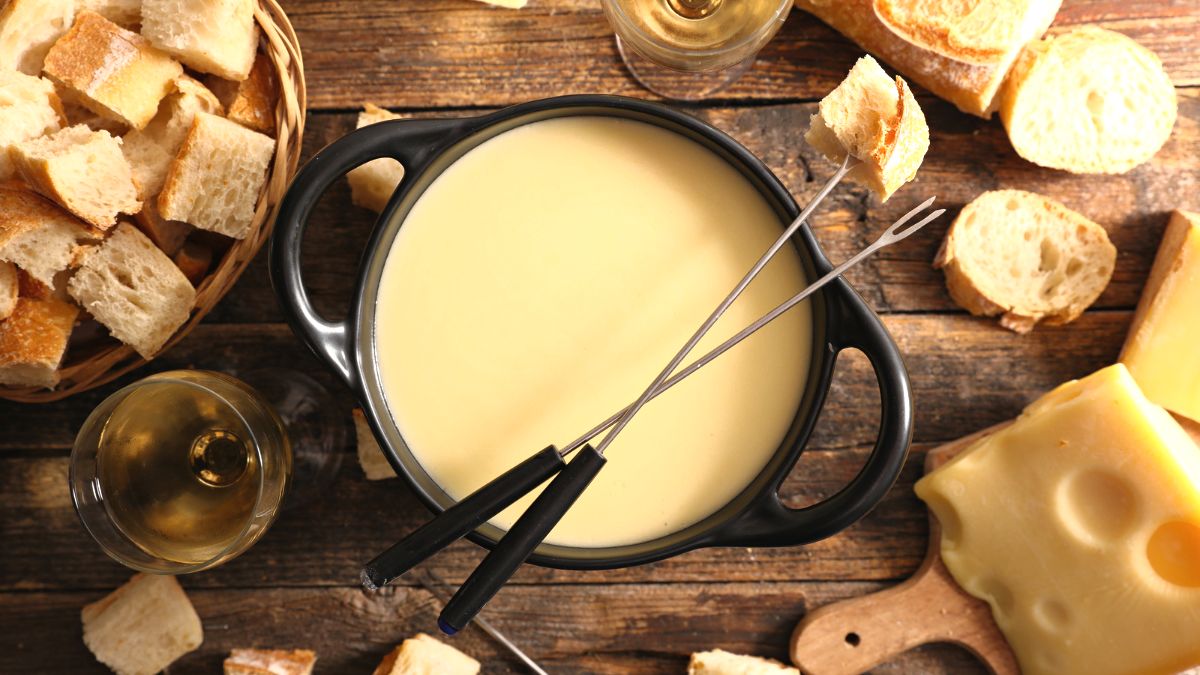Havarti vs. Swiss: Differences & Which Is Better?

Both Havarti and Swiss are superb kinds of cheese. Until I tried them I really couldn’t tell the difference. And good thing I did try them because, even though they may seem similar to the eyes, I can safely claim that your palate will know to recognize each. In addition to different origins, other features make these two unique and original. So what are the differences between Havarti and Swiss?
Havarti is a Danish semi-soft cheese made of cow’s milk. It is softer, nuttier, and sweeter than Swiss, and Swiss is firmer and more intense-flavored than Havarti. Swiss is also made from cow’s milk, and it ages longer than Havarti.
Havarti and Swiss are excellent cheeses and deserve their time in the spotlight. Knowing their differences will allow you to appreciate them better and use them more suitably so you experience them in full glory. In the following paragraphs, I will explain the differences between Havarti and Swiss.
What Are the Differences Between Havarti and Swiss?
Although Havarti and cheese visually resemble one another, they are quite different. They are almost the same colors, and both have holes. They are often used interchangeably, but in certain cases, only one will be the star of the show, so let’s see why and when!
Origin
Swiss cheese originated in Switzerland and is the trademark of the country. There are many types of Swiss cheese, all bearing the same recognizable appearance and a rich buttery flavor.
Havarti cheese was invented by a Danish woman named Hanne Nielsen, who traveled through Europe mastering the craft of cheese making. She called the cheese Havarti after the name of their family barn-Havartigarden.
If you would like to know more about Havarti, here’s the perfect video for you!
Taste and Texture
In addition to both being exquisitely delicious, Havarti and Swiss are also very rich and expressively nutty. They age for three months, but Swiss is more expressive in flavor than Havarti.
Although it is mostly a matter of taste, Havarti has been categorized as the richer of the two; however, that doesn’t make Swiss any less decadent. Havarti is gentler than Swiss and is also softer. On the other hand, Swiss is slightly firmer than Havarti, making you think that it is older, while they age for the same period.
While Havarti is more buttery and milky, with an overall soft and neutral tasting note, Swiss is nuttier and more savory than Havarti.
Both have soft textures with holes, whereby Havarti’s holes are smaller and denser than those of Swiss cheese. Although they are different kinds of cheese, they are similar in taste, and you can easily substitute one for the other.

Nutrition
Nutrition-wise, these two types of cheese are very similar, but they’re far from the same. Of the two, Swiss is the more caloric one as well as the one that has more carbs. However, the difference is marginal and negligible.
Their protein amounts are nearly the same, with the Swiss being the more protein-rich of the two. Because they are both made of cow’s milk, they contain calcium, vitamins A and B, and magnesium. Havarti is a little less fatty than Swiss, and generally, they are both low in fat. [1]
Uses
Since neither is overly expressive in flavor, both Swiss cheese and Havarti are very versatile, and you can use them in many ways and many dishes. I’ve found that they work great in each combination, from cheese plates to pasta to pizzas to grilled cheese sandwiches.
I like to serve them alongside each other as a cold entrée with fruit and deli meats paired with wine. It’s delicious! Also, a pasta dish with either of these two is a guaranteed creamy and rich meal.
Melting Properties
Since they are both pretty low in fat, Swiss and Havarti tend to melt well. Still, they do have some requirements and don’t melt away under just any conditions. To melt them properly, you need to heat them gradually and cut them into cubes instead of slices or grate them.
They both need to melt in a proper cheese-melting pot; otherwise, they will stick to the pan.

Which Is Better, Havarti or Swiss?
For melting, my choice would be Havarti, since is softer. And for charcuterie or grazing boards, I would go for Swiss immediately, but I usually pair them up together because that’s how I prefer it.
Both Havarti and Swiss are top-quality cheeses and are very similar too. Versatile, easy to melt, and not overwhelmingly flavorful yet delicious, it is only a matter of taste which one you will choose. Saying which one is better is impossible, as they are both excellent and can be used for similar purposes.
Do you have preferred uses for each? I can’t wait to read all about them in the comments below!
